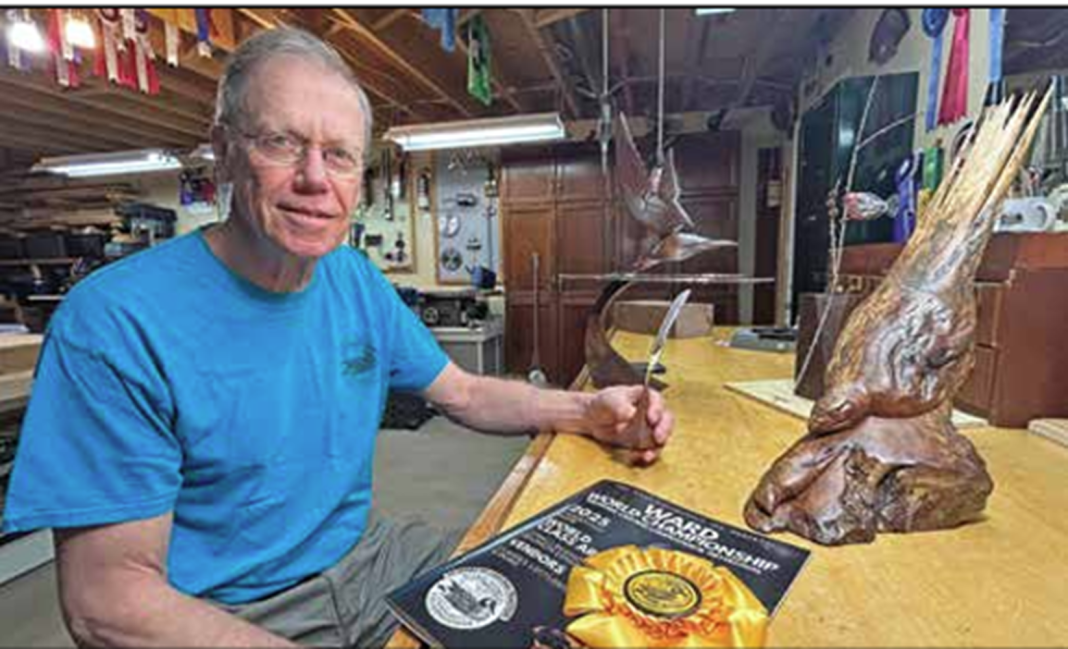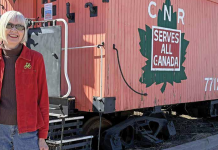Haliburton’s Greg Gillespie has added four more world championship ribbons to his collection, earning a trio of top three finishes at the 54th annual Ward Wildfowl Carving Competition in Ocean City, Maryland.
The wood sculptor entered six original pieces into this year’s event, which ran April 25 to 27. He’s been a regular since 2008, competing against other top-class carvers from around the world. The Ward competition was established in 1968 and is one of the most prestigious on the circuit, Gillespie said.
There are five different categories – levelled competition, the Lem and Steve Ward competition, the Danner Frazer Youth award, special submissions, and the official world championships.
In levelled competition, competitors are separated into novice, intermediate, advanced and masters.
Gillespie submitted two interpretive bird carvings and one decorative life-size songbird carving into the masters levelled competition, where he earned one of his ribbons. In Open Level-Bench of the Lem and Steve Ward competition, his walnut paddle finished tops in the division; a recreation of a common flicker feather in the special competition placed third. Another interpretive piece for the official world championship competition failed to place.
He was chasing a second-ever ribbon at the world championship level, after earning bronze in 2016.
“I didn’t quite get it – from talking with the judges, I have a feeling I came in fourth, which is the worst possible place to come in,” Gillespie said, noting there were 12 entries.
He spends months crafting each piece. The three interpretive pieces he estimates took between 300 and 350 hours to finish, the paddle took about 200 hours, and the flicker feather, which he painted with acrylics, about 30 hours.
They’re perfected in his Haliburton village home workshop, using mostly Ontario-sourced materials. Gillespie has become known for his trademark – black walnut.
“I don’t think I can hide my work anymore. These competitions, it’s supposed to be anonymous until the judging is done, so nobody knows who did what. But usually, when people see my pieces, they go ‘oh, that’s one of Greg’s’,” Gillespie said.
He always starts with large dark slabs, free-handing most of his designs.
“I don’t make many notes and I’m not a very good drawer – I’ll do some crude sketches of what I hope the final thing will look like, but the sculpture always changes and develops as I work,” Gillespie said. “I’ve been known to pivot completely part way through a project – that’s just how creativity works sometimes.”
The warmer months are typically spent outdoors, with Gillespie drawing inspiration from the Highlands’ natural landscape. He enjoys hiking, camping, and canoeing, and rarely returns home from an outing without a new idea. He then hibernates in his workshop over the winter, perfecting his ideas.
Gillespie has been carving since 1982, when a friend and fellow woodworker, the late Weldon Tracey, took him to his first Ward World Championship. While it took Gillespie some time to compete at the event, he’s been a regular for the past 17 years. He’s hoping to win a world championship before he hangs things up for good, but said he’s unsure when he’ll next compete.
“With the way the political climate is now, I was a little worried about going to the U.S. I last went in 2023, but had to go this year because I needed to pick up one of my older carvings that failed to sell at auction,” Gillespie said. “I probably won’t go down again now as long as Trump is in power. I don’t really want to support the U.S at this time.”





